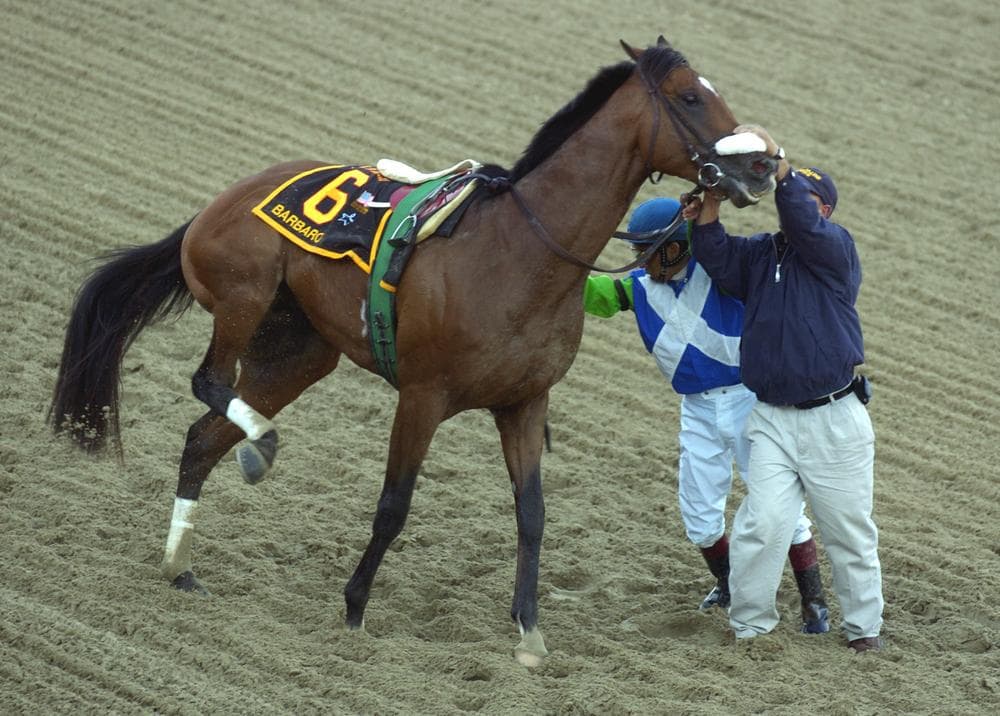Advertisement
Horses And Jockeys Face Dangers On Race Tracks

Even casual horse racing fans know that horses, like 2006 Kentucky Derby winner Barbaro, are sometimes injured, even fatally, during their races.
But injuries and deaths to horses and their jockeys are becoming increasingly common around the country, particularly in smaller, less lucrative races.
The numbers tell a chilling story: on average 24 horses die at American tracks every week.
The culprit, according to New York Times reporter Joe Drape, is a racing culture mired in performance-enhancing and pain-killing drugs, combined with lax state regulations.
Drape writes:
But an investigation by The New York Times has found that industry practices continue to put animal and rider at risk. A computer analysis of data from more than 150,000 races, along with injury reports, drug test results and interviews, shows an industry still mired in a culture of drugs and lax regulation and a fatal breakdown rate that remains far worse than in most of the world.
And as a fan, it's been hard to see.
"I'm in a tough spot, anyone who likes the sport is in a tough spot," Drape told Here & Now's Robin Young.
- NY Times: Mangled Horses, Maimed Jockeys
Guest:
- Joe Drape, New York Times reporter
This segment aired on April 3, 2012.